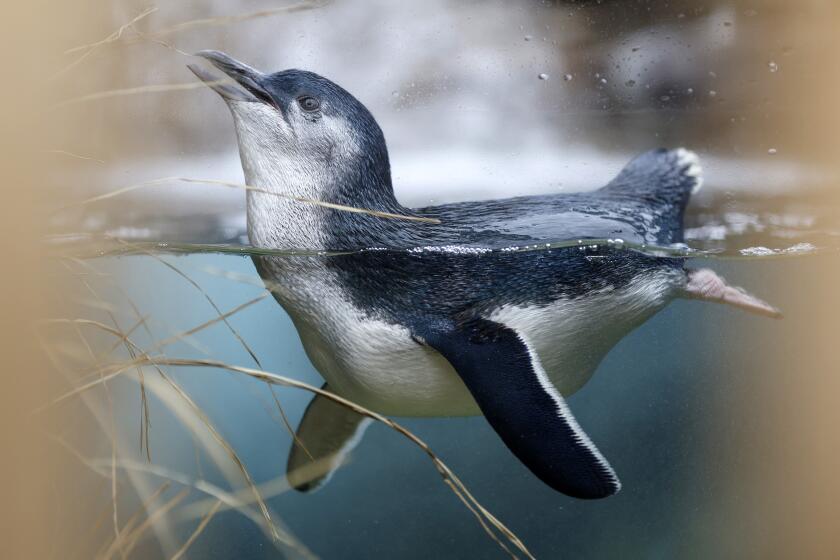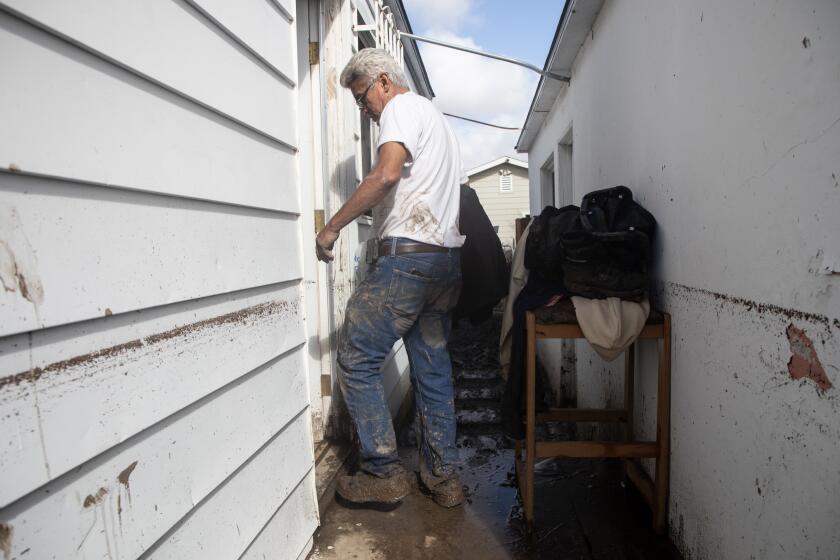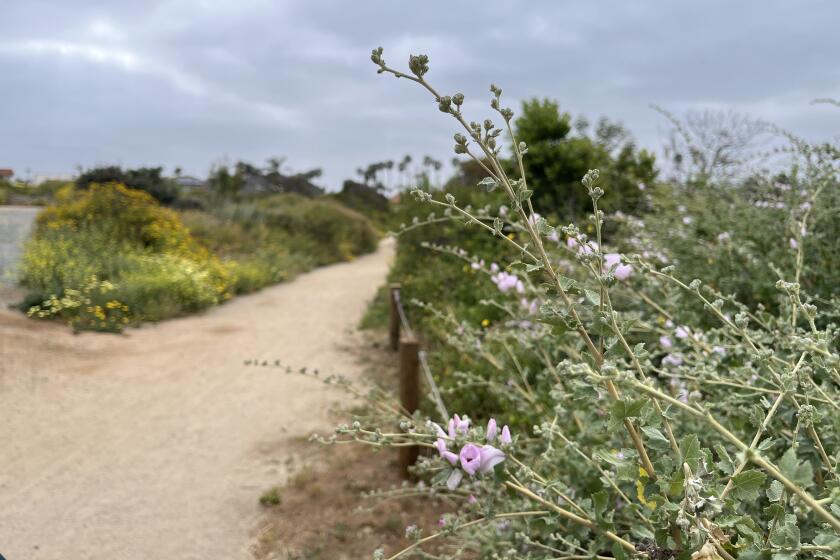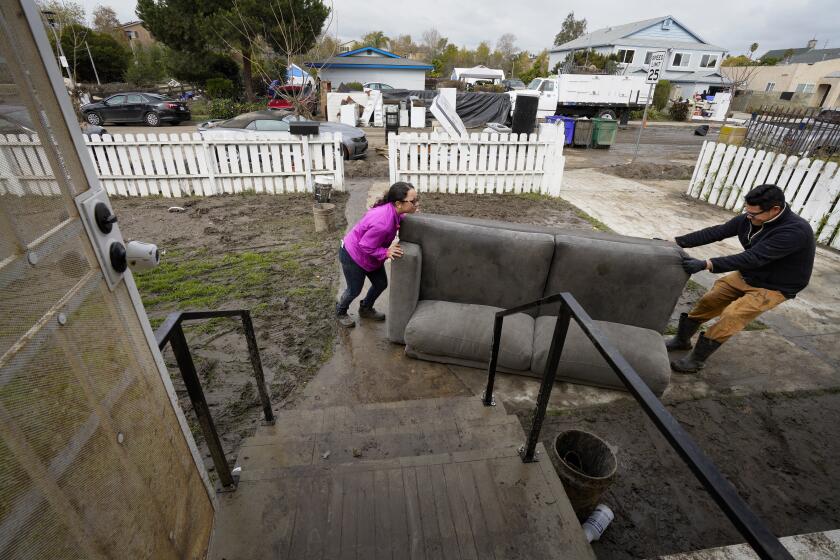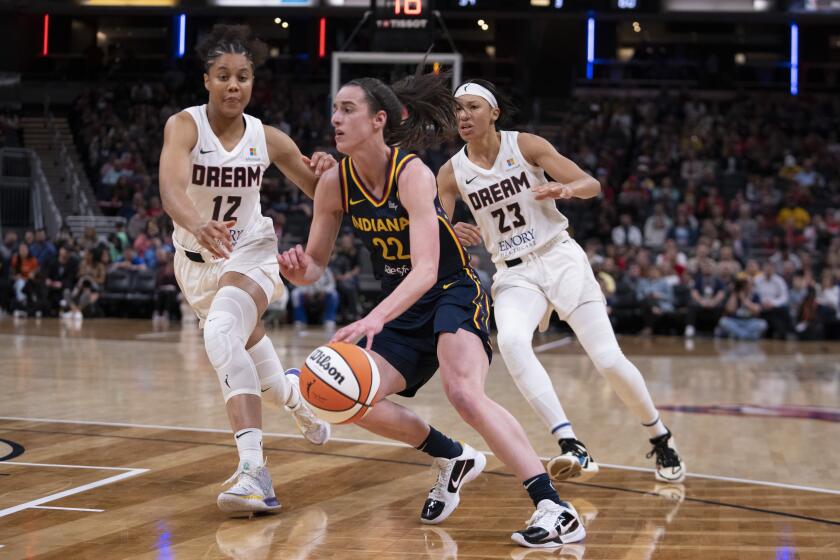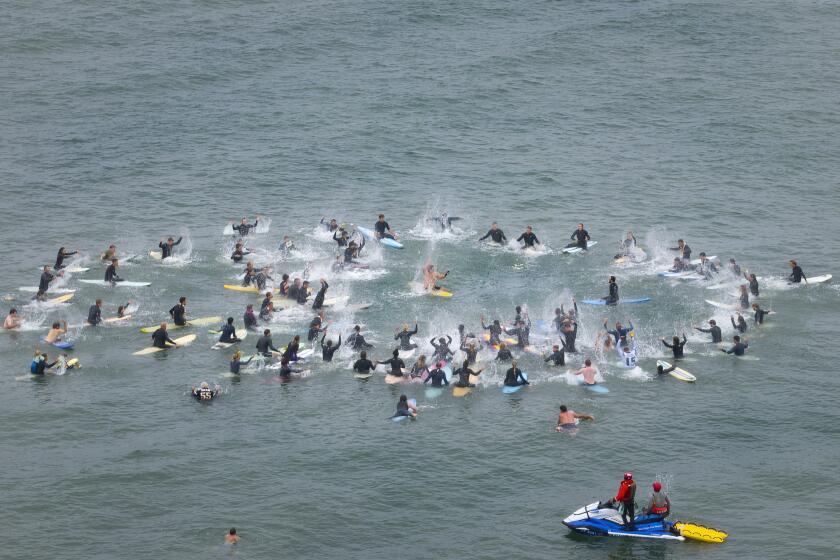‘This is a big deal for us’: Birch Aquarium announces hatch of first local little blue penguin

The new year has brought new life to the Birch Aquarium, where a little blue penguin chick hatched last month — the first one ever born on the West Coast, the aquarium announced on Thursday.
Hatched on New Year’s Day, the baby penguin is the offspring of two birds living at the aquarium’s little blue penguin exhibit, a male named Cornelius and a female named Pink/Black. It’s currently being hand-raised by aquarium staff, who are watching it develop each day.
In just its first month, it has grown significantly and already looks like an adult — which isn’t saying much for the world’s smallest penguin species, which are native to Australia and New Zealand and are fully grown at a weight of about 2 pounds.
“These penguins are super special and then to finally be able to hatch one successfully and raise it … this is a big deal for us,” said Kayla Strate, assistant curator of birds at the Birch Aquarium. “I still can’t believe how adorable it is.”
The monumental event has been years in the making. Since the Birch Aquarium launched its little blue penguin exhibit in July 2022, a key goal has been to breed and help conserve the population of the birds. But the breeding program had a few false starts, Strate said, with some breeding seasons passing by with eggs not fully developing or being fertile.
The birth of dozens of seadragons also helped the center attract more than 500,000 annual visitors for the first time
Part of the initial problem could have been related to the birds’ adjustment period to their new environment. The exhibit is home to 13 penguins from five different facilities, including some from Australia. For those animals from the Southern Hemisphere, Strate explained, they’ve had to sync up to the seasonal schedule in San Diego.
The wait has made the arrival of this little blue penguin all the more exciting.

The chick hatched from an egg about the size of a small chicken egg, Strate said, and weighed about 30 grams at birth. It now weighs about 900 grams, or around 2 pounds.
The adult birds typically weigh around 2.2 pounds and are roughly 12 inches tall. Strate said the Birch team compares the penguins’ size “to the most San Diego thing we can think of”: a big California burrito.
Aquarium staff have sent the chick’s eggshell away for DNA testing to determine its sex. They also have been hand-raising the chick over the last month, a labor-intensive job.
The penguin eats every three hours, Strate said. Staff initially fed it a blended formula of fish, krill and vitamins and have now moved on to feeding it the formula plus some pieces of fish a few times a day. Soon it will eat whole fish.
The team also monitors the bird’s temperature and watches its behavior to make sure it’s developing normally.
“Thankfully we’ve been able to keep the little one on track and it’s growing at an awesome rate,” Strate said. “Every day the chick gets bigger and more curious. It’s just a delight to see.”
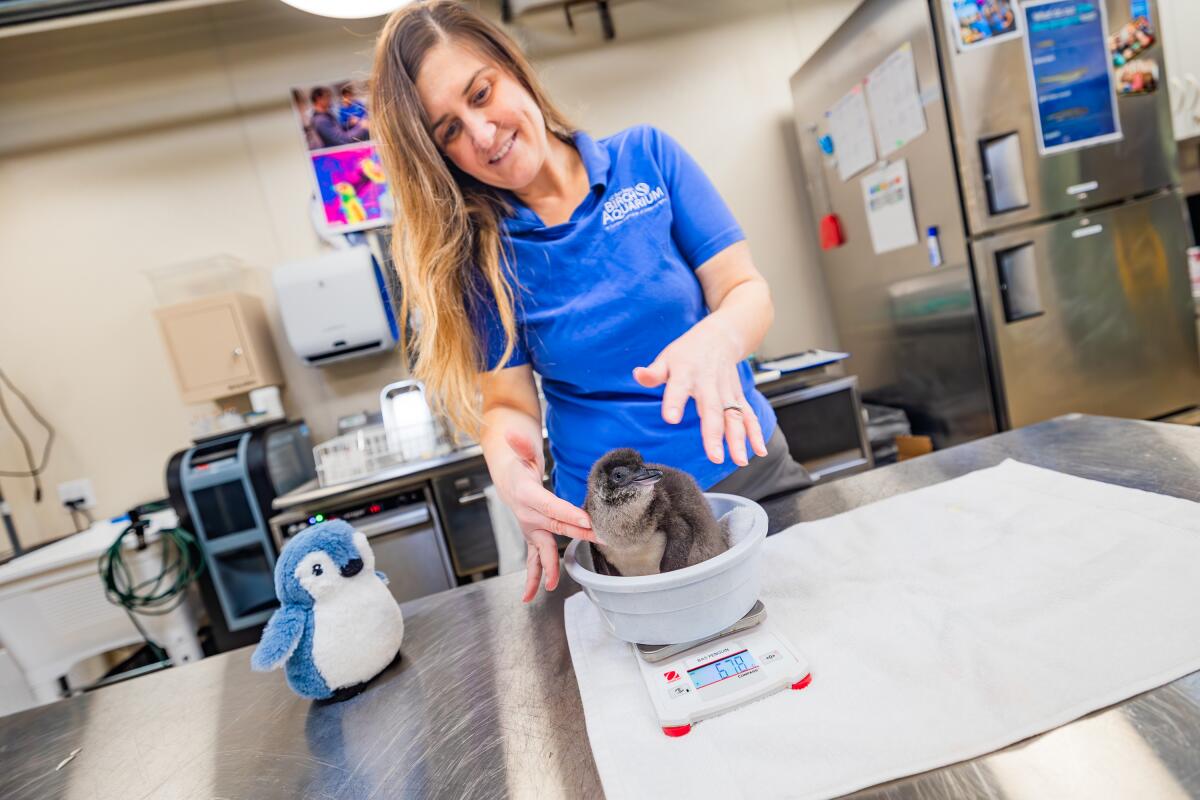
The penguin’s next big step will be its first molt, when it trades in its fluffy feathers for waterproof ones. At this time, around three months, it will learn to swim and be ready to join the other little blue penguins at the exhibit.
At first, the young penguin’s mannerisms may be an adjustment for the other birds, such as its tendency to make baby vocalizations that — in the wild — might make a penguin colony more vulnerable to predators, Strate said.
The team will do supervised visits with the penguins and make sure the newcomer is a strong swimmer before letting it fend for itself. And despite being raised by humans and not having a connection with its birth parents, Strate said the penguin will be able to eventually fit in with the new colony.
“We can spend a lot of time hands-on with them and then still have confidence that they are going to be successful in the colony as a breeder and member of that environment in the future,” Strate said.
Top headlines by email, weekday mornings
Get top headlines from the Union-Tribune in your inbox weekday mornings, including top news, local, sports, business, entertainment and opinion.
You may occasionally receive promotional content from the San Diego Union-Tribune.
